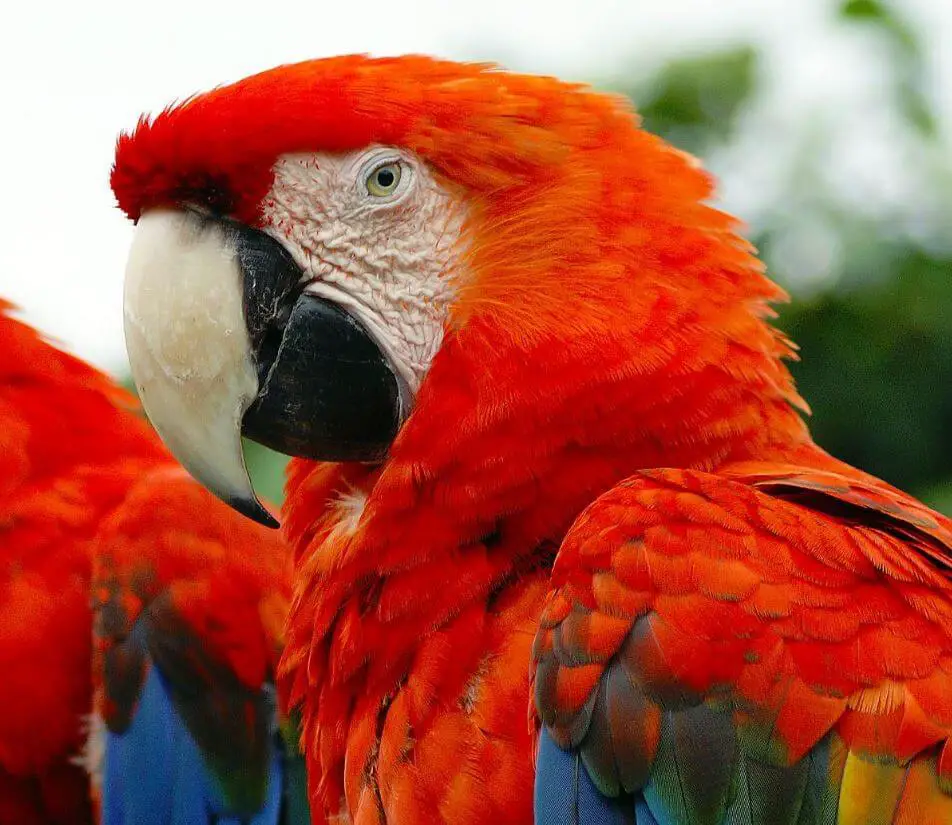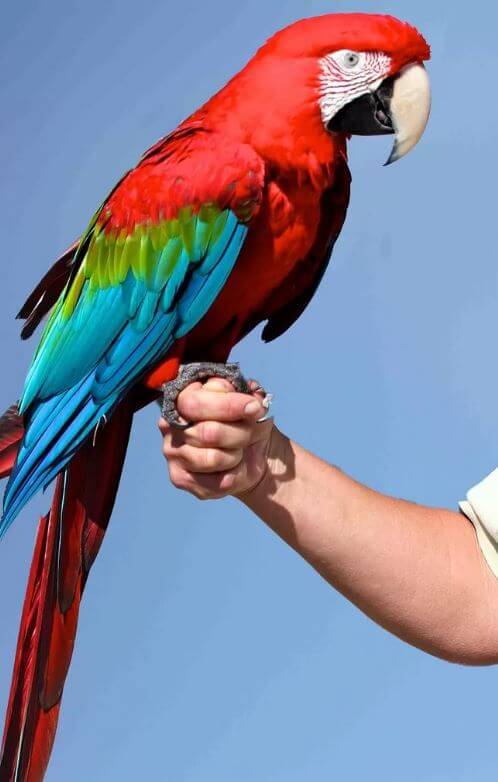Scarlet macaw dominates in this large, very colorful parrot. It has a large yellow spot and some green on the wing and blue on the flight feathers and rectrices. The rump and the base of the tail are sky blue while the tail is long and pointed in red and blue.
There are few physical differences between males and females. On the other hand, the young have dark eyes while the adults have light yellow, almost white eyes.
Scarlet macaw reproduction
The scarlet macaw nests high up, between 7 and 25 meters above the ground, in natural cavities or old woodpecker holes. The female lays 1 to 4 eggs but usually two to three eggs per clutch. Incubation lasts about 28 days.
The young are able to fly at three months of age but do not become independent until they are between four and five months old. The young stay with their parents for up to a year. Sexual maturity is reached at 3 or 4 years.
A couple of macaws are monogamous and they will reproduce only once a year sometimes every two years.
What does scarlet macaw eat?

The scarlet macaw feeds on nuts and fruits that it finds in the forest canopy. It can also eat insects, buds, leaves, bark, flowers, and even nectar.
Its beak is well suited for cracking nuts or other very hard fruits. This adaptation gives it an advantage over other frugivorous species that do not have such strong beaks and therefore do not have access to this food source.
Scarlet macaw habitat
this parrot is found in Central and South America. It lives in the so-called dry land areas of tropical rainforests, from Mexico to the Amazon, in lowlands (500 m altitude and less).
Scarlet macaw facts

This parrot flies in pairs or in small family groups of three or four individuals. It sometimes gathers in sailboats of 25 to 50 birds in sites that serve as their roosts, such as very large trees or mangrove forests.
At certain times of the day they, together with other species of parrots, form large gatherings on eroded banks to swallow clay.
This swallowing neutralizes the effect of the toxins contained in the fruits, which are a little too green, that they have eaten.
Scarlet macaw populations have declined sharply due to habitat destruction, capture for trade, and pesticide spraying.
In Costa Rica, for example, the scarlet macaw occupies only 9,100 km² of the surface area of the 42,500 km² they once occupied.
Scarlet macaw adoption
The majority of macaws are listed under CITES, the Convention on International Trade in Endangered Species of Wild Fauna and Flora. To adopt a macaw, it is necessary to hold a detention permit or a certificate of capacity.
It must have papers certifying that its provenance is legal. The bird must be ringed or chipped.
Scarlet macaw lifespan

A scarlet macaw’s lifespan can easily reach 60 years in captivity. When you adopt a Macaw, it’s for life! If well fed and given all the attention it needs, a macaw is quite hardy.
However, it can be subject to follicular cysts (feather cysts), conjunctivitis, and chlamydiosis, a highly contagious infection that can be transmitted to humans.
Scarlet macaw price
It is necessary to count around 2000 $. You can find it in pet stores but buying it directly from a breeder allows you to see the breeding conditions and to have valuable advice.
SOURCE: John Downer Productions

